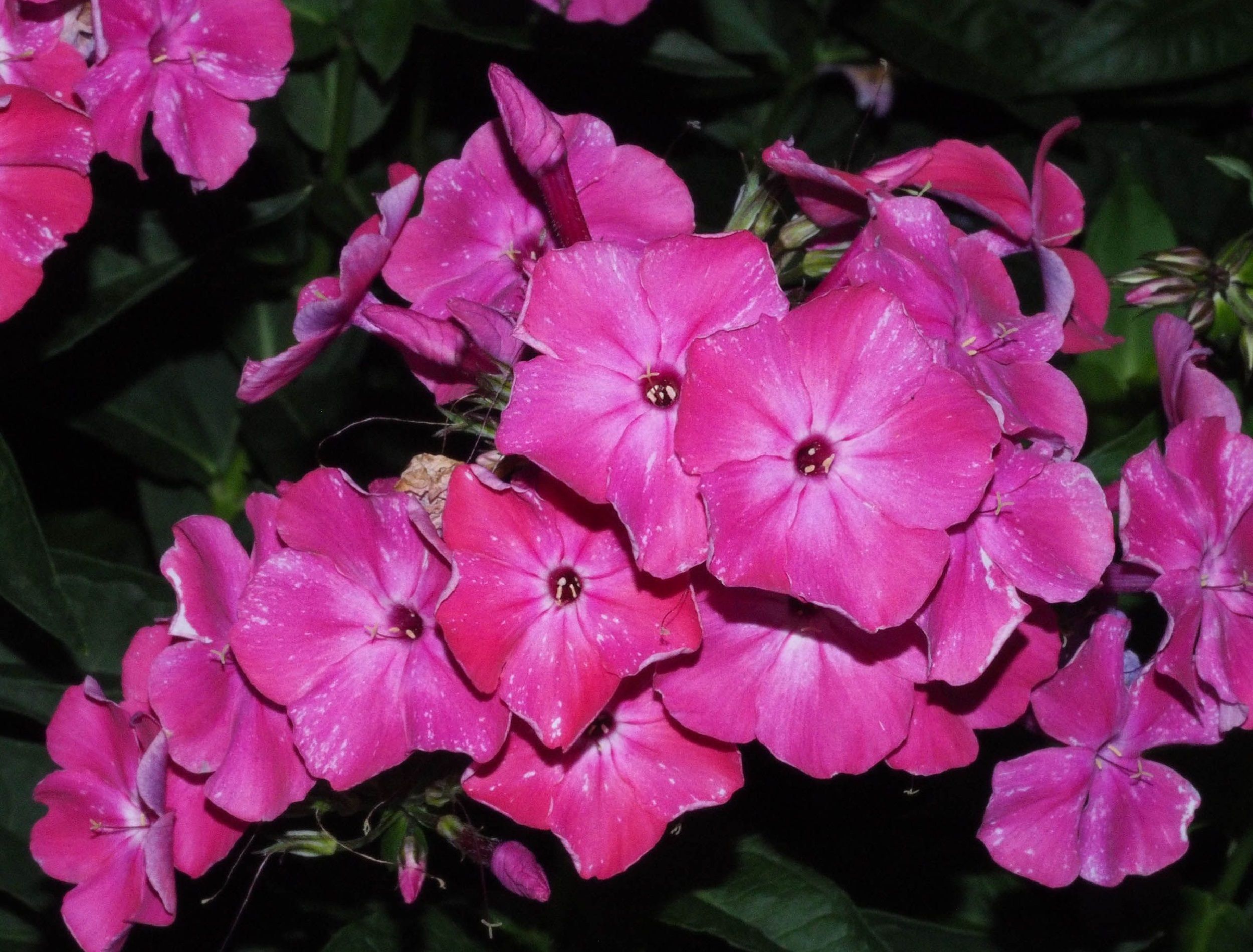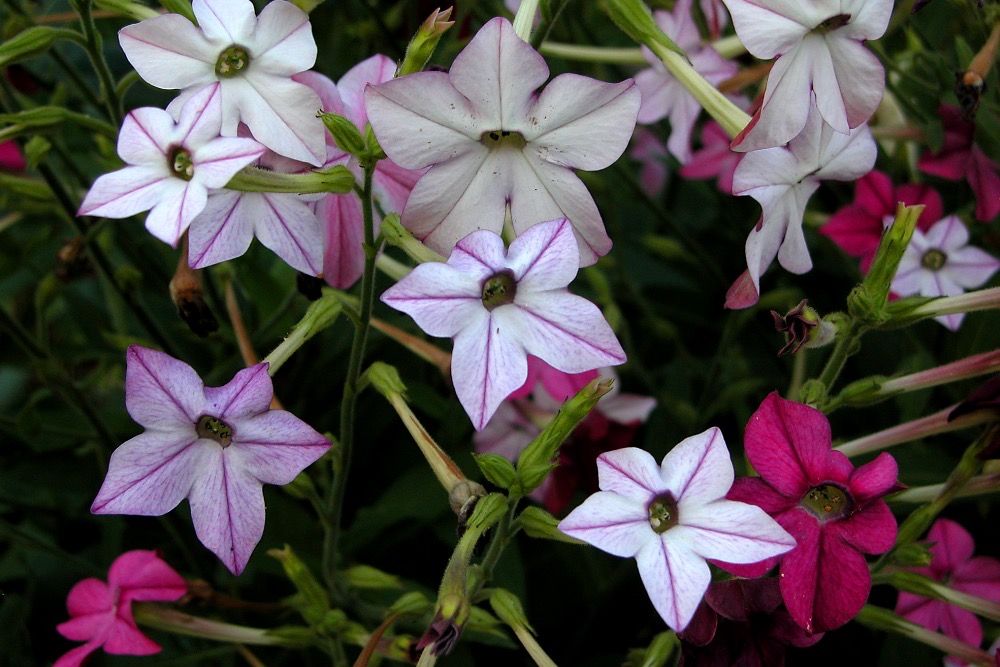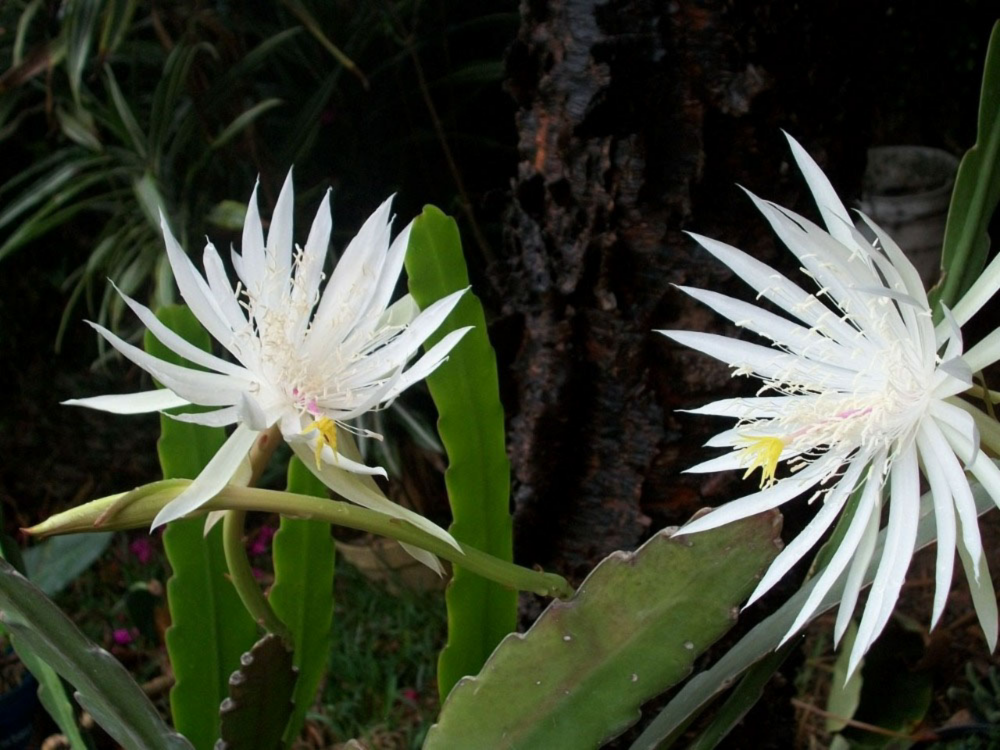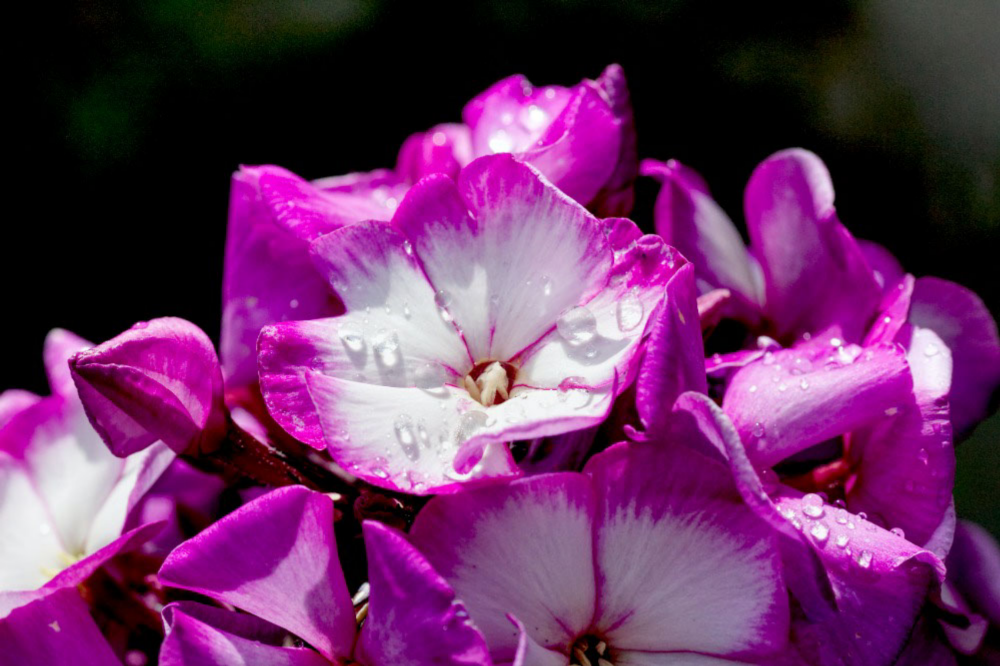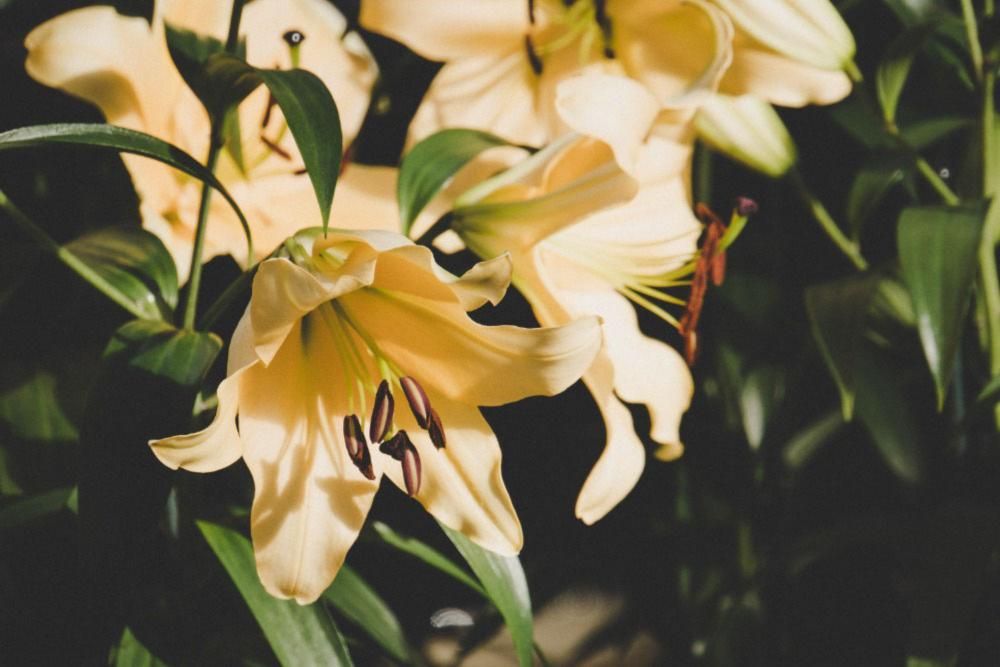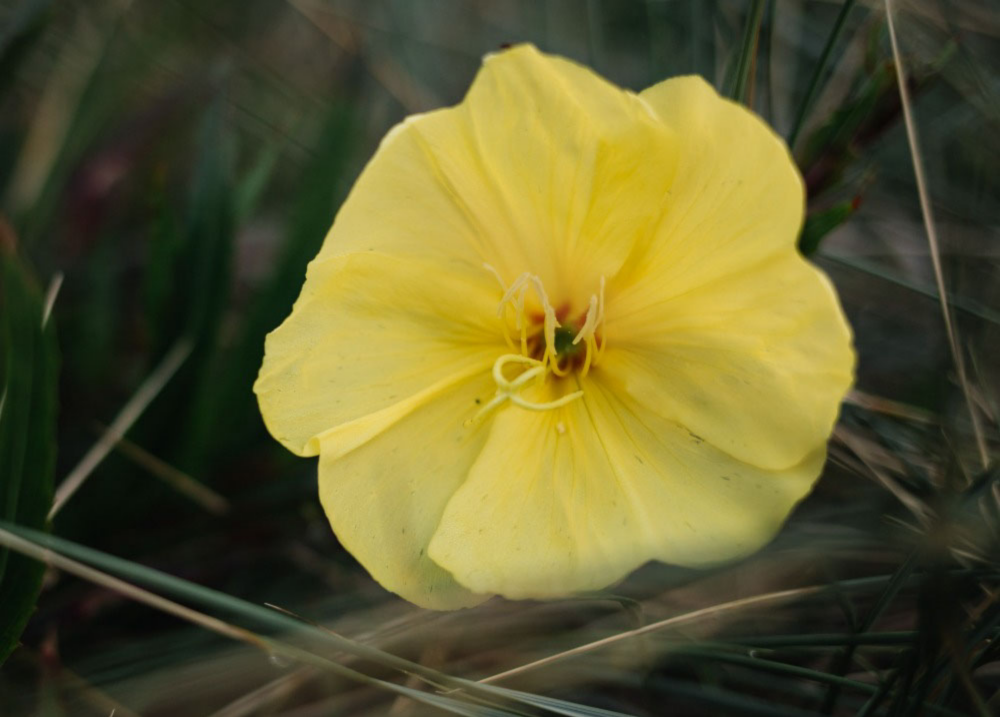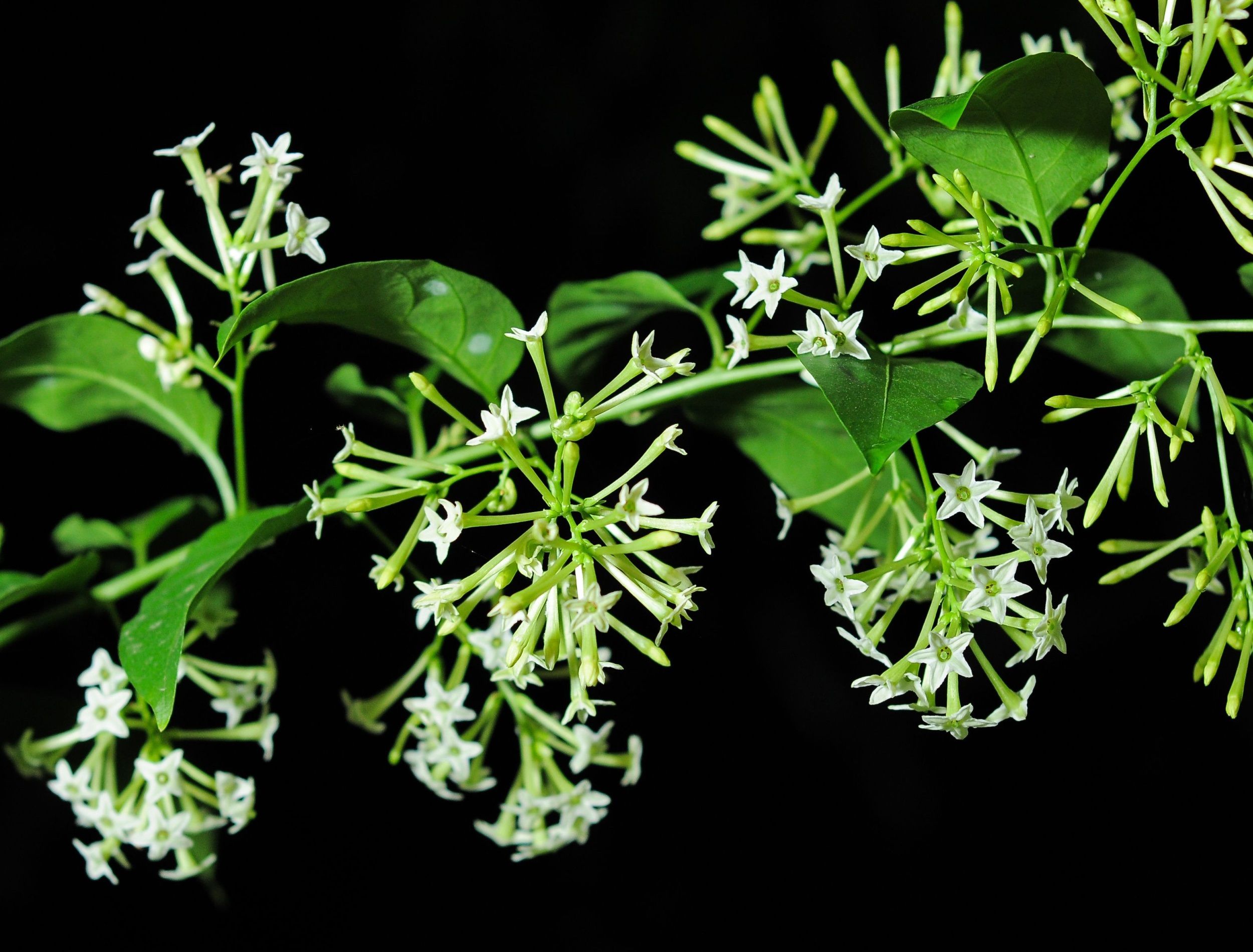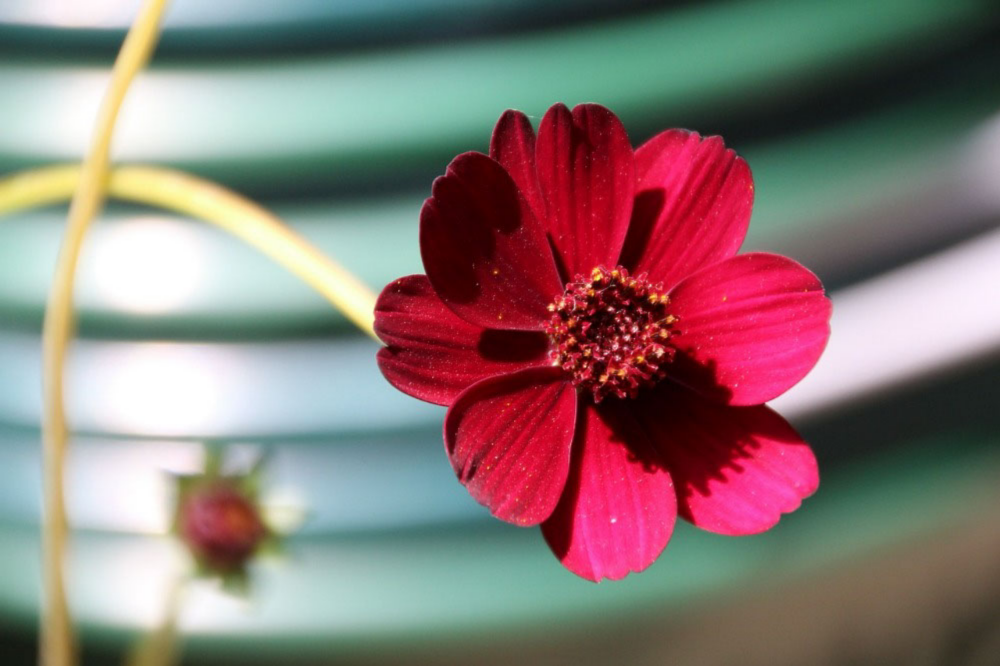Have you ever considered designing a garden you can enjoy in the evening? If you're a night owl with restless yet creative energy, this garden is perfect for you! Discover seven amazing flowers that bloom at night and some care tips on light and soil.
Nicotiana
Image credits: Carl E Lewis via Openverse
Nicotiana (Nicotiana alata) boasts five tubular petals in colors like pale red, white, and lavender. This star-shaped flower gives off a sweet, jasmine scent when it blooms in the evening during the fall and summer.
The plant prefers full sun and grows best in organically rich, moist, yet well-draining soil. Nicotiana grows as a perennial in USDA zones 10 to 11, but you can treat it as an annual in cooler zones.
Night-Blooming Cereus
Image credits: PublicDomainImages via Pixabay
The night-blooming cereus (Epiphyllum oxypetalum) is also called the Dutchman's pipe because of its tubular shape. This cactus's flower features a yellow stamen at its center. At its base, the spineless stems become round and lobed. Blossoms emerge from the notches of the stem; each many-petaled boom is about 6 inches in diameter.
Night-bloom cereus is a tropical flower that likes the sun and heat — the ideal temperature for this plant is 90 degrees Fahrenheit!
Give this cactus dry but well-draining compost mixed with a sandy component. Choose a commercial cactus mix with 3 inches of coarse sand. Water only when your soil is very dry; overwatering this plant will kill it.
Night Phlox
Image credits: Phil Mitchell via Pexels
Night Phlox (Zaluzianskya ovata) is native to southern Africa. The flower boasts evening blooms with hints of honey, almond, and vanilla scents (hence its nickname, midnight candy). Its sweet smell attracts pollinators like moths. Even better, the flower has beautiful white, pink, and purple petals that form clusters.
This plant is perfect for your night garden because it grows easily in the proper soil and light conditions. Night phlox prefers full sun in moist, well-draining loam- or clay-based soil.
Night Gladiolus
Image credits: Kelly Kiernan via Unsplash
Originating in southern Africa, gladiolus (Gladiolus tristis) is a perennial flower with pale yellow and creamy white petals. Its delicate, carnation-scented flowers bloom at night in winter before the plant goes dormant in the summer. It also emits a heavenly smell at night while opening its blooms wider to attract pollinators
Gladiolus prefers well-draining soil that is chalk, loam, or sand based.
Evening Primrose
Image credits: Ellie Burgin via Pexels
Another amazing flower that blooms at night is the evening primrose (Oenothera caespitosa). With its yellow flower shaped in a rosette pattern of four petals and spiral-shaped leaves in the center, this eastern-North-American native resembles a buttercup. Unlike the buttercup, evening primrose flowers gracefully open at dusk and close again when the sun rises. Night moths and early-morning bees attracted to their lemony scent pollinate these blooms.
Primrose grows in medium well-draining soil that is either gravelly or sandy, and the flowers need full sun to thrive. However, they can grow in part afternoon shade and tolerate drought. The blooming season for these bright flowers is from June to September.
Night-Blooming Jasmine
Image credits: Adimas L. Nugraha via Shutterstock
Originating in the Caribbean Basin, the night-blooming jasmine (Cestrum nocturnum) has small tubular white to pale green flowers and a heady, sweet scent. Once the sun goes down, these flowers start to bloom and attract pollinators like moths and other nocturnal insects.
The flowers grow well in moist, rich soil that is well-drained, and they prefer full sun but can tolerate partial shade. The ideal climate for these succulent flowers is in USDA zones 9 to 11.
Note: Night-blooming jasmine is an invasive plant in some areas. Check your local ordinances before planting.
Chocolate Flower
Image credits: biollama via Pixabay
The chocolate flower (Berlandiera lyrata) is native to Mexico and the southern United States. Its yellow or red petals bloom at night, giving off a distinct chocolate smell that peaks from early to mid-morning.
The chocolate flower grows in medium to dry, well-drained soil in full sun but can tolerate dry, shallow, and rocky soil. These sweet-scented flowers bloom from May until October in USDA zones 4 to 10.
Moonstruck Flowers
All in all, you can't go wrong with these night bloomers, as they are excellent choices for the following reasons: They bloom when the sun sets, come in a variety of colors, emit heady fragrances, and are good for pollinators. So, when night comes, and you can't sleep, take a stroll in your garden and look at what's blooming.
Will you try planting some of these flowers that bloom at night? Please share any tips or tricks you have in the comment field below.

